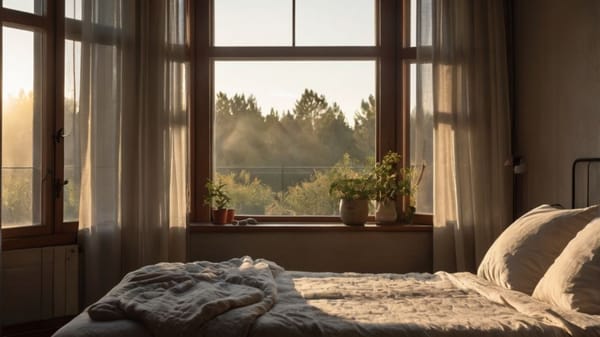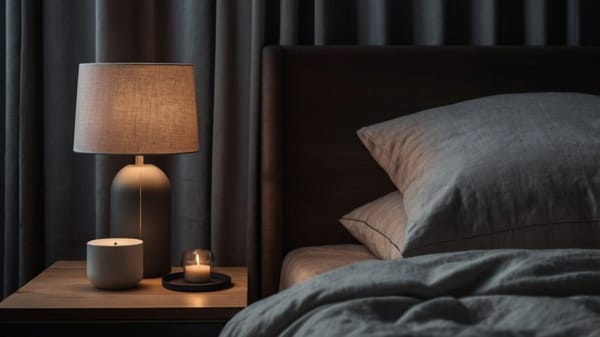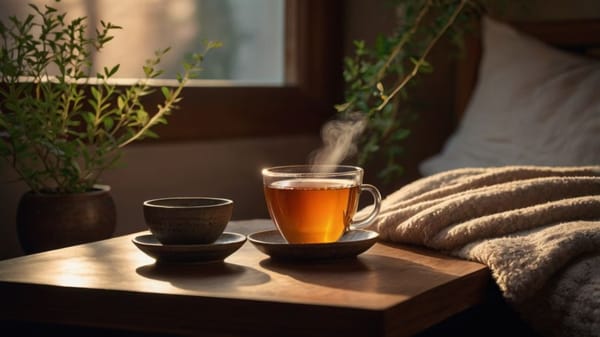The Truth About Over-the-Counter Sleep Aids
Discover what OTC sleep aids really do to your brain—and learn science-backed sleep strategies that boost energy, clarity, and recovery.
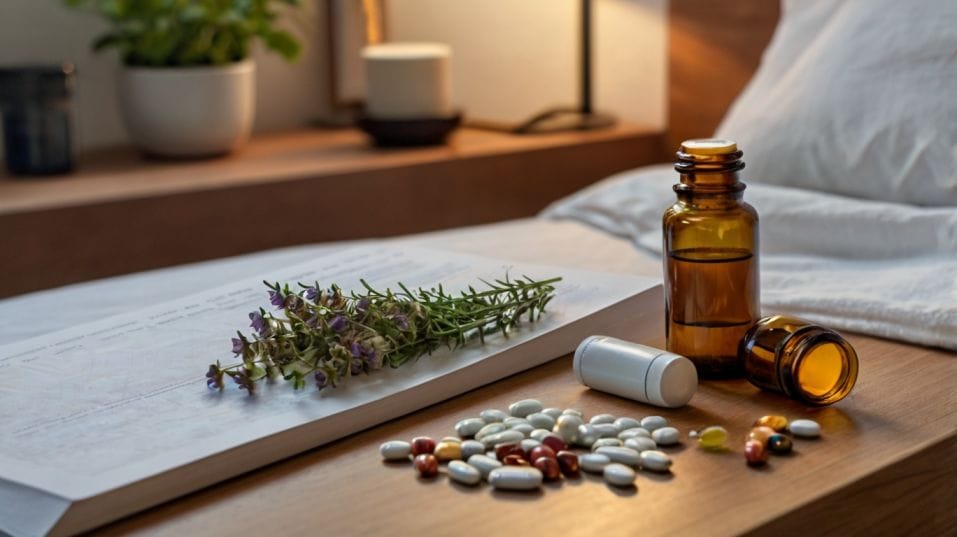
Ever wonder if that nighttime pill is really helping—or just knocking you out? You’re not the only one reaching for over-the-counter sleep aids when rest feels out of reach.
But the truth is, most of these solutions sedate your brain without actually improving your sleep.
If you’re serious about waking up energized and focused, it’s time to go deeper than drowsiness. Real rest comes from rhythm, not just remedies.
What's Actually Inside OTC Sleep Aids?
Walk into any pharmacy and you’ll find shelves full of products promising better sleep. Most of them fall into two categories:
Antihistamine-based sleep aids
These are the ones in products like ZzzQuil, Tylenol PM, Unisom, and generic “Nighttime” meds.
Their main ingredient is diphenhydramine or doxylamine succinate. Originally used for allergies, these antihistamines cause drowsiness as a side effect—and that’s why they’re repurposed as sleep aids.
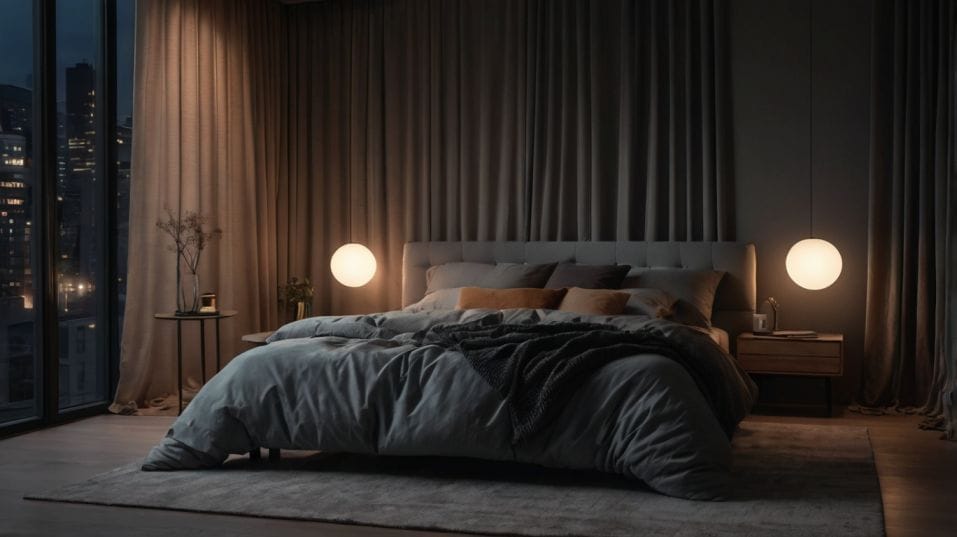
Melatonin supplements
Melatonin is a hormone your body makes naturally as daylight fades. It tells your brain it’s time to wind down. Supplementing with melatonin can help reset your internal clock, especially after travel, night shifts, or inconsistent routines.
Sounds good in theory. But here’s what you need to know: OTC sleep aids don’t create quality sleep. They sedate. That’s a massive difference.
Sedation ≠ Sleep
Popping a pill and knocking out might feel like a win, but you’re not getting the deep, structured, multi-phase sleep your brain and body actually need.
That kind of sleep—the kind that improves memory, mood, muscle recovery, and hormonal balance—can’t be forced.
OTC sleep aids can disrupt your sleep architecture. That means fewer cycles of REM and deep sleep, which are the most restorative stages.
You might feel groggy in the morning, or like you slept but never really rested. And over time, you build a tolerance. The pills become less effective.
You start needing more… for less. If you’re here to build smarter, science-backed sleep habits, that’s a dead end.
So What Actually Helps You Sleep Better?
Here’s the shift: Instead of knocking yourself out, start teaching your body how to want sleep again.
That’s what delivers consistent energy, recovery, and mental clarity. That’s the goal. Let’s look at what actually works—based on sleep science, not marketing hype.
Consistent Sleep-Wake Timing
This is foundational. Go to bed and wake up at the same time every day. Yes, even weekends. Your circadian rhythm loves regularity.
If you constantly shift your schedule, your brain stays confused, never knowing when to power down or ramp up.
Set a fixed wake-up time, and your body will eventually learn when to start releasing melatonin naturally—no pills needed.
Melatonin: Use It Strategically
Melatonin can be useful, but only when used correctly. It’s not a knockout drug—it’s a cue. Take 0.5 to 1 mg about 30–60 minutes before your target bedtime.
Higher doses don’t work better. In fact, they can disrupt natural melatonin production if you overdo it.
Use melatonin when you’re adjusting to a new time zone or shifting your schedule—not every night. It’s a tool, not a lifestyle.
Low-Stim Evenings
Your body can’t sleep if your brain thinks it’s still daytime. Dim the lights. Shut down screens at least an hour before bed.
Blue light tells your brain to stay alert, and it delays natural melatonin production. Even if you're tired, your sleep quality takes a hit.
Try this instead:
- Use warm lighting after sunset.
- Swap Netflix for a warm shower, calming music, or light reading.
- If you must use screens, wear blue-light-blocking glasses or enable night mode.
These habits stack up. Your brain starts to associate low light and quiet with sleep prep.
Smart Supplements (Not Sleep Bombs)
If you’re looking for support without sedation, consider science-backed supplements that promote relaxation—not just unconsciousness.
- Magnesium glycinate: Helps calm the nervous system and support muscle recovery.
- L-theanine: An amino acid that promotes calm without drowsiness.
- Valerian root or chamomile: Mild herbal options that can support sleep onset.
Look for clean, simple formulas without a laundry list of synthetic fillers. You want support, not sludge.
Your Bedroom = Your Recovery Zone
The space you sleep in matters more than you think. Your brain is constantly interpreting signals from your environment. Give it the right ones.
- Dark: Invest in blackout curtains or a sleep mask. Even tiny amounts of light (like from electronics) can suppress melatonin.
- Cool: Ideal sleep temperature is 60–67°F. Cooler temps signal your body to wind down.
- Quiet: If outside noise is a problem, use a fan, white noise app, or earplugs to block distractions.
Make your room a space that tells your nervous system: you’re safe, it’s quiet, it’s time to rest.
Evening Rituals That Work
Sleep isn’t a switch—it’s a process. Create a predictable wind-down routine that trains your brain to transition into sleep mode.
Keep it simple:
- A 10-minute journal to clear mental clutter.
- A warm herbal tea (no caffeine).
- Light stretching or deep breathing.
- A book instead of TikTok.
Ritual creates rhythm. Rhythm creates readiness.
Final Thoughts
OTC sleep aids can offer short-term help, but they’re not your long-term solution. The real path to better sleep—and better performance in every part of your life—is rhythm, environment, and small, smart adjustments that add up fast.
Start with consistency. Support your natural rhythms. Build rituals that tell your body it’s safe to rest.
You’ll sleep deeper, wake up clearer, and function better in every way that matters. Start now. Tonight. One habit. One cue. Let your sleep actually work for you.

